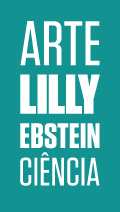Anatomy illustrations
ORIGIN AND EVOLUTION
-
 Lilly Ebstein | Clique para ver +
Lilly Ebstein | Clique para ver + -
 História | Clique para ver +
História | Clique para ver +
The history of Human Anatomical drawings has important milestones in the 16th Century in the works by Leonardo da Vinci and Andreas Vesalius and his De Humani Corporis Fabrica.
The history of drawings in Medicine and Human Anatomy begins with Leonardo da Vinci and his drawings published around 1510. Then, Jacopo Berengario da Carpi (1460-1530) published Commentaria Super Anatomia Mundini, in 1522, and Andreas Vesalius published De Humani Corporis Fabrica, in 1543, with illustrations by Jan Stephen van Calcar.
According to Rifkin, Ackerman and Folkenberg, the illustrations in Vesalius’ book were revolutionary: the human body had never been drawn with that level of scientific clarity and artistic quality before, which was enhanced by the quality of the carving and the print. “The result was the most accurate, detailed and solid set of images of the human body ever produced at the time and for some time after”. The “expression” of the skeletons made suffering and mortality real and human, and they are there to contribute to Medicine. [1]
Friedman and Friedland said, “a book of Medicine had never had such height nor width. A book of Medicine had never presented illustrations with similar artistic beauty and anatomical precision. And a book of Medicine had never been published before (nor thereafter) with such refined typography”. [2]
The transfer of knowledge by means of illustrations, and the not so obvious idea that an illustration could be informative, was one of Vesalius’ most expressive contributions to Anatomy, according to Eduardo Kickhöfel. “In Vesalius’ time, a visual culture was in its inception, and was related to the discovery of illustration techniques developed in the studios of Renaissance artists and the intense publishing activity going on at the time, which gradually discovered the ‘power of illustrations’”. [3]
Up until the 16th Century, books on Anatomy were poorly illustrated. For approximately 14 centuries, the knowledge of Anatomy was based on the writings by Roman physician and surgeon Claudius Galeno (150-200 A.D.), who believed that figures “distorted” the text and, for this reason, his books are descriptive and not illustrated.
The transition into the Renaissance provided the combination of new humanistic concepts and developments in Medicine, Science and Art, but most of all, a shift in the understanding of man’s place in Nature and in the world. It was in the Renaissance that the use of illustrations in Medicine was established, on the one hand, based on a new understanding of the human body that Medieval imaginary did not envisage, quite the contrary, banned it; and on the other hand, the unprecedented association between Science and Art, which made the illustration an essential part of scientific information.
During the 17th and 18th Centuries, illustrations had different schools and followed the general trends and esthetics of each period. The work by Henry Gray (1827-1861) and the drawings by Henry Vandyke Carter (1831-1897) in the book Anatomy, Descriptive and Surgical (London, 1858) can be considered a milestone in the standard of illustrations in the second half of the 19th Century. According to Rifkin, Ackerman and Folkenberg, this book’s illustrations became a “tour de force” and a reference for similar works: well organized, beautifully drawn, in clear and portable proportions.
[1] Rifkin, Benjamin A., Ackerman, J. Michael e Folkenberg, Judith. Human Anatomy. A Visual History from the Renaissance to the Digital Age. New York, Abrams, 2006, p.16.
[2] Friedman, Meyer e Friedland, Gerald. As dez maiores descobertas da medicina. São Paulo, Companhia das Letras, 2008, pp. 27 e 30.
[3] Kickhöfel, Eduardo H. P. “A lição de anatomia de Andreas Vesalius e a ciência moderna”, scientiæzudia, Vol. 1, n. 3, 2003.
Lilly Ebstein Lowenstein (1897-1966) led a life between science and art, drawing and taking photographs in the fields of Medicine and Zoology. In her work, Lilly combined her technical knowledge of photography and drawing, the study of the sciences and a remarkable talent for aesthetics. She was born in Germany and studied at the Lette-Verein School in Berlin from 1911 to 1914. In 1925, she immigrated with her husband and two children to São Paulo. In 1926, she became an illustrator and photomicrographer at the Illustration and Photography Department at the School of Medicine (USP, as of 1934), which she headed for thirty years after 1932. Lilly collaborated at Instituto Biológico de Defesa Agrícola e Animal (the Biological Institute for the Defense of Agriculture and Animals), from 1930 to 1935, namely in the Avian Pathology Department. A life with art dedicated to the research and dissemination of science.

